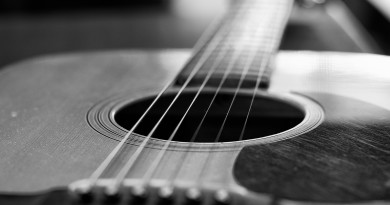The Beginner’s Guide To Creating The Perfect Practice Space
Every teacher knows the real secret to success for a student is the quality of practice they do. Without regular practice, the hard work undertaken in the lesson can be a waste of time. Every day, little by little, a student can overcome technical difficulties and phrasing problems to perfect their repertoire. Even the most gifted of musicians regularly practice to maintain and improve their technique and performance.
So what does it take to ensure practice is of a high enough quality? Firstly, a good teacher will explain and demonstrate how to practice each of the pieces you’re working on. Now all you need is a good, quiet, and private space to work on it. Ideally, you’ll have a dedicated room in the house to store and play your music. Have a good look around your teacher’s studio or teaching room. Ask questions about all the things that are in there. How do they organise their music and instruments?

The room you choose to store and play your musical instruments shouldn’t suffer any dramatic changes in temperature. Wooden instruments like recorders need to be warmed up to be in tune. A cold room will hamper this. Even electrical instruments should be kept out of direct sunlight, damp areas, or drafts.
You’ll need a cabinet or shelf for your music books. Over the years, your repertoire will increase dramatically. Cataloguing this makes it easier for you to locate it, study it, and play it again. A small desk or table is ideal for marking up your score with fingering or articulation details. As you study music theory, a good desk is essential. A comfortable chair with a straight back is also useful to accompany the desk, or to sit as you play.
Whether you have a piano or not, it can be a good idea to get a keyboard. They’re really handy for improvising harmonies, checking pitch, or having someone accompany you. You can often record on them so you can play back chord loops and riffs. If you have a digital piano, it may already have all this functionality.
Spare stationery is useful to have to hand on your desk. Paper to make notes on, and plenty of sharp pencils and an eraser are essential. You may want a docking station for your iPad. Then you can play from digital sheet music, or view demonstration videos online. A printer gives you the option to print out extra manuscript paper, or emailed lesson notes from your teacher.
If you have your music lessons through Skype or FaceTime, you will need a tripod to place your camera on. Your teacher will need a good view of you and your instrument as you play so save some floor space. You may choose to leave your music stand up at all times. But don’t leave your instrument assembled or open when not in use. Dust, dirt, and mishaps can ruin a good instrument.
Ultimately, you can practice anywhere in the house that is safe for you to do so. A good acoustic can be a pleasure for sound, but it’s not essential. So long as you can clearly hear what you are playing plus any backing tracks or recordings, that’s fine. Practice without unnecessary interruption is important so you can focus on your work. Try to ask family members to give you some space for a while. Finally, keep your lesson notes in front of you at all times. There could be some important gems of advice in there!






Pingback: What’s The Most Important Thing For A Beginner To Do? – TheMusicTeach
Pingback: How To Work With A Child That Won't Practise
Pingback: Here’s How To Turn Your Spare Room Into The Perfect Hobby Space « The Packrat Wifey